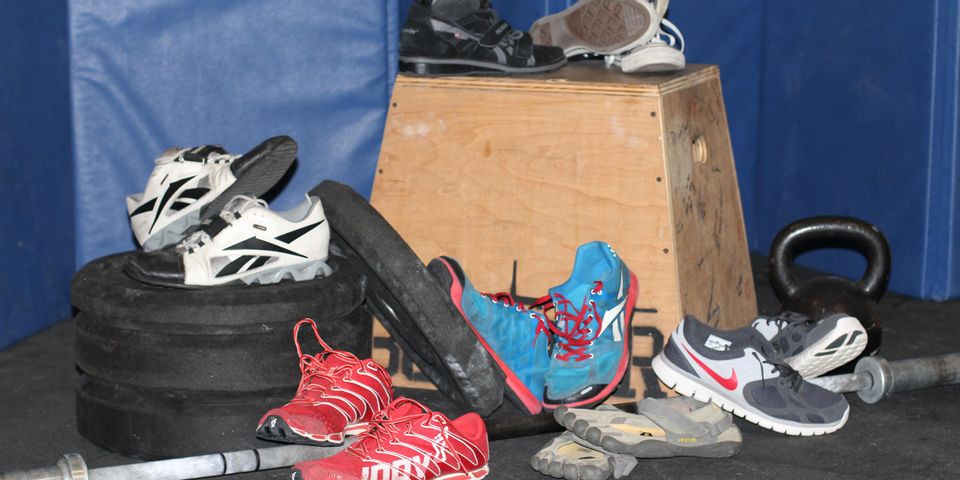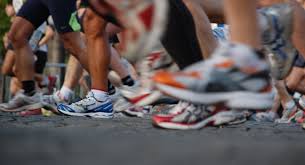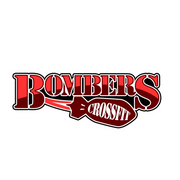Choosing the Right Shoe -- Part I, The Running Shoe

In today’s market there are hundreds if not thousands of different shoe choices to fit your workout needs. Each shoe boasts that its brand is best, and it can provide you with a better workout experience. While the manufactures can argue back and forth and spend millions of dollars into advertising I will try to help you to put one foot in front of the other and start a journey into choosing the right shoe for you. Each type of shoe has positives and negatives, and hopefully I can help you determine which shoe would be best for you.
Allow me to begin by saying I’m not sponsored by any shoe company (but I’m sure I wouldn’t turn any down if they came asking). I’ve tried many different products and have challenged myself to workout in all types of footwear from Nike Free to Reebok Nano, Chuck Taylors to Rogue Do Wins, Inov-8 and Vibram 5 Fingers… I’ve tried ‘em all. This is my attempt to help you narrow down your shoe choices and find the right fit for you.

Traditional Running Shoe
Let us begin by looking at a traditional running shoe. I’m sure most of us are familiar with running shoes from the major manufactures such as Nike, Reebok, New Balance, and Adidas. A traditional running shoe is very comfortable. The shoe is built with a great deal of cushioning under the heel and forefoot providing shock absorption while running. The cushioning makes for a comfortable shoe that can be worn for extended periods of time and for almost any activity. The traditional running shoe has a large raised heel typically between 12-16 mm. For running long distances athletes who heel strike while running will find this type of shoes more comfortable, but for athletes who run with a more natural mid-foot to forefoot strike will find the raised heel to be cumbersome.
A traditional running shoe offers very little stability when moving laterally. These shoes are designed for running and walking in straight lines, and they are wonderful for that. A great deal of movement is done in straight lines, but when you are asked to quickly change directions the shoe may not hold up for you.
Finally, the large amount of cushioning is very compressible. That’s the way it’s designed you may say, yes it is—which is great for deflecting shock from heel striking while running. When you are weightlifting the force you are attempting to drive through your feet into the ground is dispersed through the cushioning of the shoe, compressing, and giving you an unstable platform. You may not notice it when you do air squats at first, but once you've been training with weights for a little while you will begin to notice your feet moving around as you lift.
A traditional running shoe is a great choice for everyday comfort, and excellent on long runs. It is not the best choice for dynamic changes of direction or weightlifting.
| PRO | CON |
| Comfortable | Limited Stability |
| Usually Lightweight | Promotes Poor Running Mechanics |
| Multiple Uses | Poor Weightlifting Shoe |
About the Business
Have a question? Ask the experts!
Send your question

